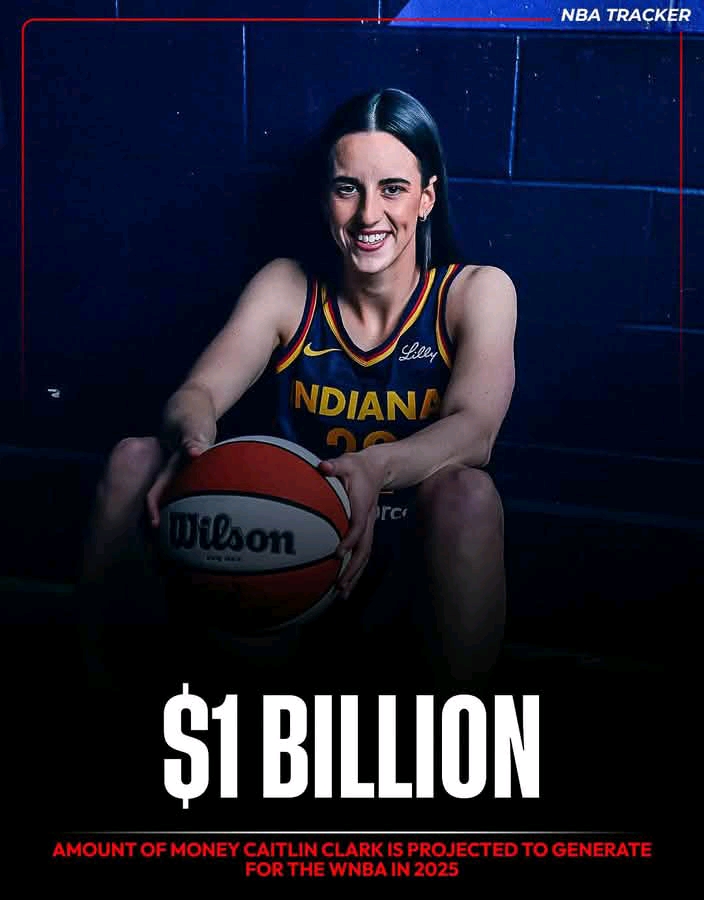Caitlin Clark’s impact on women’s basketball is being felt louder and prouder than ever before. The former Iowa star and current WNBA rookie is projected to generate a staggering $1 billion in economic activity for the WNBA during the 2025 season, according to industry experts and league analysts. Her presence is redefining the landscape of women’s professional sports.
The phenomenon that is Caitlin Clark already made waves in 2024, where she was reportedly responsible for 26.5% of all WNBA economic activity. That includes ticket sales, merchandise, media rights, sponsorships, and viewership spikes across multiple platforms. The WNBA hasn’t seen anything like this since its inception in 1996.
Clark, drafted No. 1 overall by the Indiana Fever, quickly became a household name. Her jersey became the best-selling WNBA jersey of all time within weeks of release, and her games consistently broke attendance and TV ratings records. Every arena she visits turns into a sold-out show — a true “Clark Tour” sweeping across the nation.
Sponsorship revenue has surged thanks to her arrival. Companies that previously showed little interest in the WNBA are now fighting for ad space during Fever games. From Nike and Gatorade to Meta and State Farm, brands see Clark as the golden key to tapping into a growing, younger fan base that spans genders and generations.
Television networks are also cashing in. Clark’s games have driven ESPN, ABC, and even streaming platforms to record viewership numbers. Multiple Fever games were moved to national TV slots in 2024, and the trend is only expected to grow as networks prepare for even more demand in 2025.
According to financial experts, Clark’s influence has created an “economic halo effect,” benefiting not just the Fever, but the entire WNBA. Teams across the league are seeing increased ticket sales for games against Indiana, with some teams even opening up larger arenas to accommodate the Clark crowds.
This billion-dollar projection isn’t just hype — it’s based on tangible growth metrics. WNBA merchandise sales have tripled, digital subscriptions are up, and league social media engagement has exploded. Clark’s personal highlight reels routinely garner millions of views, helping introduce the league to millions of new fans globally.
The WNBA has already begun reshaping its business strategies to adapt to the “Clark Era.” League officials have hinted at expanding media rights deals, increasing player salaries, and even exploring the possibility of expansion teams to accommodate the league’s sudden boom in popularity and demand.
Clark’s presence is also inspiring the next generation. Youth basketball programs are reporting record enrollment among young girls, many of whom wear her jersey and emulate her style of play. Her influence extends beyond economics — it’s a cultural shift in how women’s sports are perceived and celebrated.
In a league that has long fought for equal recognition, Caitlin Clark is more than a superstar — she’s a movement. The WNBA has never been hotter, and much of that heat traces back to her historic debut season. The league is betting big on 2025, and with Clark leading the charge, the billion-dollar mark might not just be a projection — it could be a milestone shattered.
As one league executive put it: “Caitlin Clark isn’t just changing the game — she’s changing the business of the game. And we’re all here for it.”





























